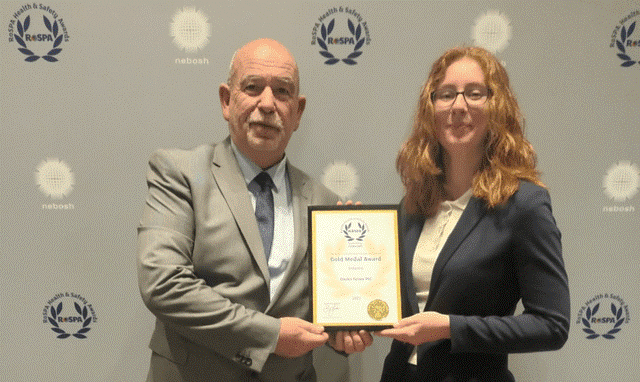Since 2012 the number of through freight services using the Channel Tunnel has grown by over 20%. In 2014 alone, cross-Channel rail freight saw double digit growth (14% more trains and 21% increase in tonnage). This increase came from increase in Intermodal and automobile components flows combined with the favourable impact of the ETICA (Eurotunnel Incentive for Capacity Additions) scheme which incentivises new routes.
Rail freight trains now link the UK economy directly with Poland, Germany, Italy, France and Spain. In addition, through a vast network of intermodal connections many other countries are now served via the Channel Tunnel.
Europorte, operating in the UK as GBRf and France as Europorte France, has played its role as a vector for growth through producing synergy between operations and forming a true link between hubs. Europorte has proven its flexibility, having had to adapt to new routes required by transport customers which led to new transport solutions being offered. The British and French operations are now firmly established as the third operator in each of the two countries
During this growth, Eurotunnel (through its annual Network Statement) has introduced measures to offer improvements in product offering, reduce barriers, offer support and lower the costs of using the Tunnel. In 2014, the toll charged per train was reduced by over 30% and prices held until 2018, the ETICA scheme to support new freight services in the development phase was improved and action was taken to reduce costs at the rail interface in Calais Frethun.
In the last three years, new services and trial of exciting new concepts have seen High Speed Freight trains between Lyon and London St Pancras using a TGV, lorries on rail moving from the Port of Antwerp to London Barking, daily overnight shuttle trains between London Barking and Lille (Dourges).
The Dourges-Barking route, with five trains per week, is a real proof of the competitive advantage of cross-Channel rail freight compared to road and sea. It shows that the reliability of rail freight over medium distances is a real benefit for transporters who increasingly care for the environment.
In the UK freight services to/from the Channel Tunnel and London follow either the conventional routes via Kent or High Speed 1 (HS1).
Still underutilised, HS1 allows the use of lower cost, more efficient continental gauge wagons, can act as a hub for transhipments onto other UK domestic intermodal services and is and important location distribution centres.
Conventional routes between the Channel Tunnel and London have underused capacity giving direct links direct to UK routes to Scotland, England and Wales.
Europorte recognise that further growth will be stemmed unless we work to remove barriers and constraints. Projects are under way to resolve solutions to these barriers on both sides of the Channel Tunnel to include :
Interoperability of new locomotives capable of operating across Europe, through the Channel Tunnel and into the UK;
Challenging need for security and customs requirements;
Introducing lower cost freight wagons;
Support for investment in additional terminal capacity.
By 2016 the conventional Channel Tunnel routes to London will have achieved ‘Freight Corridor’ status with routes North of London following on by 2018. Whilst this has many implications, importantly it does bring the opportunity for significant European funding for infrastructure works. Corridor status will make the investment case for physical works more achievable. When complete customers across the UK should see the removal of current gauge restrictions and the ability to offer services for larger container sizes
New markets to the Channel Tunnel will add to these increases in trains and put more pressure on the need invest in the routes to and from the Channel Tunnel in UK. Examples of the new markets are carex (as mentioned in the TGV train to London St Pancras), automotive and rolling road (truck on trains).
Carex plans to use the European high speed rail network to carry air freight pallets and containers between distances of 300km and 800km, involving:
A modal shift from trucks and short/mid-range aircraft to high speed trains wherever appropriate;
Airport-based air/rail terminals connected to high speed rail links;
A service tailored to suit the logistics chains and transport plans of integrators, with priority given to express freight in order to guarantee next day delivery, followed by less urgent air cargo freight.
The automotive industry was one of the main sectors to utilise the Channel Tunnel in the early years from its opening. The Tunnel has already seen an increase in the transport of components by rail into the UK and now projects are under way to maximise this sector, with new wagons and increased terminal capacity for cars to and from Europe. 2015 will see the fulfilment of the first phase of these projects and the future looks positive for the return of automotive sector to cross channel rail.
Rolling Road plans to build on the successful test train from Belgium (Antwerp) that conveyed P400 lorry trailers in pocket wagons – the first time that this method of transporting goods has been used between Europe and the UK. Using HS1 the route to Belgium and across parts of France are now available for rolling road operations. Other methods are also being developed, including new concepts in combination with existing terminal lifting capability in preference to existing grapple-arm and sling systems currently used to lift full sized semi-trailers in Europe.
www.eurotunnelfreight.com





